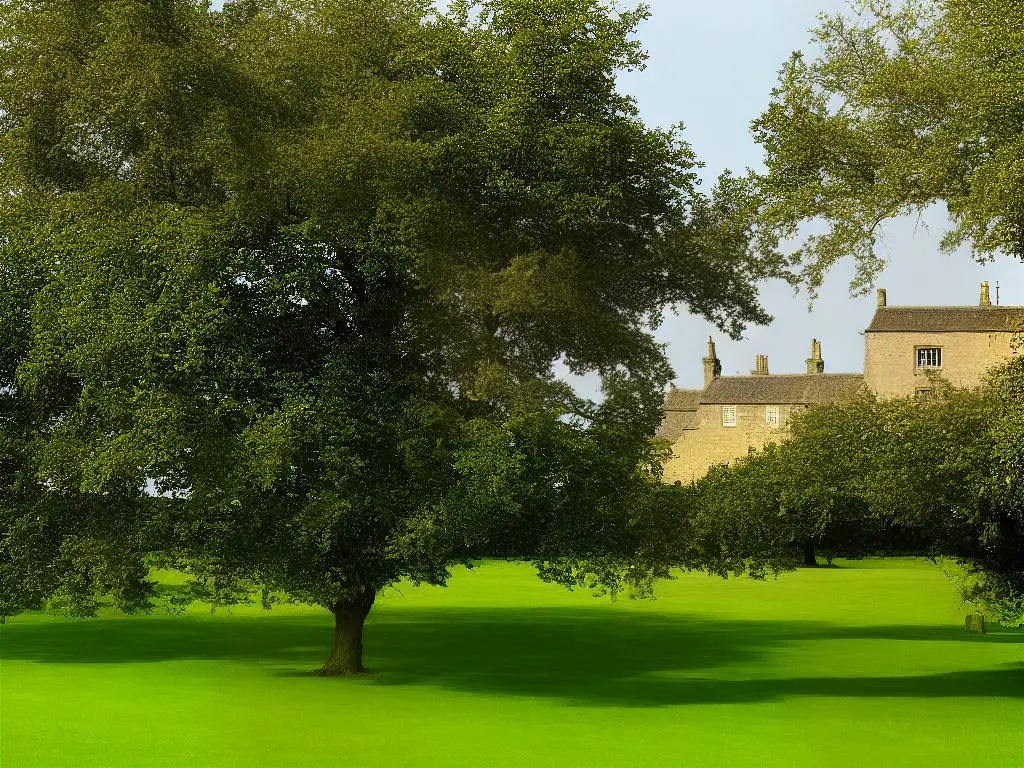Undoubtedly one of the most significant moments in the history of science, the tale of Sir Isaac Newton and the falling apple has captivated scholars, researchers, and the public alike for centuries. This fascinating story transcends mere fruit, encapsulating the birth of a groundbreaking understanding of the physical world around us. As we explore the legend of Newton’s apple, delve into the consequential scientific advancements, and examine the current state of the enigmatic tree, we gain invaluable insight into the serendipitous origins of gravity, the three laws of motion, and the lasting cultural resonance.
The Legend of Newton’s Apple
The Legend of Newton’s Apple
The famous legend of Sir Isaac Newton’s apple takes us back to the 17th century, when the young scientist and mathematician returned to his home in Woolsthorpe Manor, Lincolnshire during the Great Plague of 1665. According to the story, Newton was inspired to formulate his Universal Law of Gravitation after observing an apple falling from a tree in his family’s orchard. This moment became a symbol of humanity’s quest for knowledge and the link between observations of everyday events and the underlying scientific principles that govern the natural world.
Although the exact details of the apple story remain shrouded in mystery, the framework of Newton’s groundbreaking discovery remains intact. Upon noticing the falling apple, he began to question why it fell straight downward instead of following any other trajectory. This inquisitive observation led Newton to ponder the existence of a force that pulls objects toward the Earth. After extensive research and calculations, he developed the Universal Law of Gravitation, which describes the attractive force between two masses, such as the Earth and the apple. Newton’s work on gravity fundamentally transformed our understanding of the universe and laid the groundwork for modern physics.
Significance of Newton’s Apple Tree
Newton’s apple tree is a treasured symbol of scientific discovery and curiosity that still resonates today. Situated at Woolsthorpe Manor, this tree is believed to have inspired Newton more than 300 years ago. The Royal Society, one of the oldest and most esteemed scientific organizations in the world, has meticulously preserved this historic tree, which continues to produce apples even after centuries. As well as its historical importance, Newton’s apple tree may serve as a source of inspiration for current and future generations of scientists, encouraging them to keep probing the universe’s wonders and the secrets held within the laws of nature.
Scientific Importance of Newton’s Apple Tree
The Birth of the Concept of Gravity
A pivotal event in the history of science occurred under a specific apple tree, which later became indelibly associated with the celebrated scientist, Sir Isaac Newton. The tale recounts Newton witnessing an apple falling from the tree, leading him to question why apples fell straight down instead of moving in other directions. This observation sparked his awareness of the yet-unnamed force that caused the apple, as well as any other objects, to fall towards the Earth’s center – gravity. The apple Newton saw falling played a crucial role in inspiring his investigation of gravitational forces, thus cementing the apple tree’s significance within the scientific community.
Foundations for Modern Physics
Thanks to Newton’s apple tree-inspired realizations, he went on to develop his three laws of motion, which laid the foundations of classical physics. The First Law, or the Law of Inertia, states that an object at rest stays at rest and an object in motion stays in motion with the same speed and in the same direction unless acted upon by an unbalanced force. The Second Law introduces the concept of force, relating it directly to the acceleration of an object and indirectly to its mass. The Third Law, also known as the Law of Action and Reaction, states that for every action there is an equal and opposite reaction. These groundbreaking laws provided the basis for the development of modern physics, space exploration, and technological advancements in numerous fields.
Symbol of Scientific Inspiration
Newton’s apple tree remains a powerful symbol of scientific inspiration today. It is a reminder of the moment when the renowned scientist conceived the concept of gravity and the laws of motion, cornerstones in our understanding of the physical world. Scholars and researchers persist in examining the tree and its apples in pursuit of connecting with the origins of this fundamental aspect of physics. The tree, along with its descendants, has been propagated and planted at various institutions across the globe, representing the bond between observation, curiosity, and scientific inquiry.

The Current State of the Apple Tree
The Present Status of the Newton Apple Tree
Located in Woolsthorpe, England, near Sir Isaac Newton’s family home, the celebrated apple tree that is said to have inspired his theory of gravity continues to flourish in the garden of Woolsthorpe Manor, currently overseen by the National Trust.
Belonging to the Flower of Kent variety, the tree is a green cooking apple known to have existed since the 17th century. It holds significant cultural and scientific value, as it played an integral role in shaping our comprehension of gravity and the laws of motion.
Special Care
Currently, the Newton Apple Tree is receiving special care to maintain its health, as it is a significant historical artifact. Over the years, extreme weather and natural aging have caused some damage to the tree, but conservation efforts are ongoing, and the tree continues to produce fruit every year.
Progeny trees grown from the original tree’s cuttings have been planted worldwide, often in scientific institutions as a symbol of inspiration.
For instance, a descendant tree was planted at the Massachusetts Institute of Technology (MIT), and another one in the courtyard of the Isaac Newton Institute for Mathematical Sciences in Cambridge, UK.
Cultural Icon
The Newton Apple Tree, both as a historical artifact and as a symbol of scientific inquiry, has permeated throughout popular culture. It has been featured on one side of the British 50p coin commemorating the 300th anniversary of Newton’s Principia Mathematica.
Additionally, in 2014, an exhibition at the London Science Museum showcased an apple from the iconic tree alongside the original manuscript of Newton’s theory. The tree has thus taken on a legendary status, reminding both scientists and the public of the importance of curiosity and the pursuit of knowledge in understanding the natural world.

From a simple observation of nature to a monumental shift in our comprehension of the universe, the impact of Newton’s apple tree continues to echo throughout the scientific realm today. By deconstructing the legend, recognizing the crucial scientific developments attributed to this historic moment, and cherishing the preservation and ongoing legacy of the tree itself, we pay homage to a critical juncture in human knowledge. As we forge ahead with our own scientific pursuits, let us not forget the importance of curiosity, fortuity, and the ever-present wonders that surround us, waiting to be discovered and unraveled.